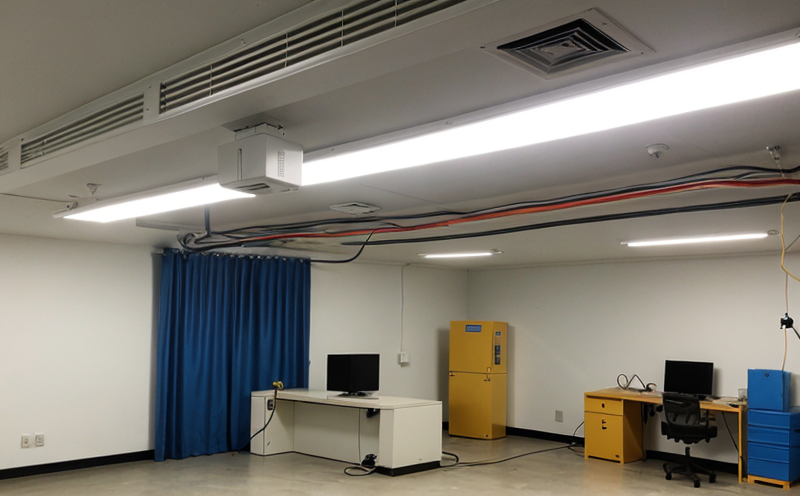EN 60364 Electrical Installations of Buildings
The European Standard EN 60364 is a comprehensive guide to the design and installation of electrical installations in buildings. This standard ensures that all building installations meet high safety standards, providing protection against fire, electrical shock hazards, and other risks associated with faulty or improperly installed electrical systems.
EN 60364 covers not only the technical aspects but also the organizational and management processes required for safe design, installation, commissioning, operation, maintenance, and decommissioning of electrical installations. It emphasizes the importance of risk assessment and mitigation throughout the lifecycle of an electrical system in a building.
From the perspective of quality managers and compliance officers, EN 60364 is crucial because it sets out clear guidelines for ensuring that all aspects of electrical installation are up to standard. This includes specifying the materials, methods, and practices needed to meet safety requirements while also considering environmental factors such as energy efficiency.
In the context of R&D engineers, EN 60364 provides a framework for innovation within safe boundaries. Compliance with this standard ensures that any new technologies or design approaches used in building electrical installations are tested against established benchmarks and can be implemented with confidence.
For procurement professionals, adhering to EN 60364 means selecting suppliers who provide components and materials that meet these stringent requirements. This helps ensure that the final installation will comply not only with the standard itself but also with all relevant local regulations.
The standard is particularly important for ensuring reliability in critical environments where even minor disruptions could have significant consequences, such as hospitals or data centers. By adhering to EN 60364, these facilities can maintain uninterrupted power supply and minimize risks of failure due to electrical faults.
EN 60364 also emphasizes the importance of regular inspection and maintenance programs designed to identify potential issues before they escalate into larger problems. This proactive approach helps extend the useful life of electrical installations while maintaining high levels of safety and reliability.
A key aspect of EN 60364 is its focus on risk assessment, which involves identifying hazards associated with different parts of the installation process and implementing controls to manage those risks effectively. This includes assessing the likelihood and severity of potential incidents and selecting appropriate countermeasures based on this evaluation.
The standard also places a strong emphasis on documentation, requiring detailed records of all stages of design, installation, commissioning, operation, maintenance, and decommissioning processes. These documents serve multiple purposes, including providing evidence for compliance audits, facilitating troubleshooting in case of incidents, and supporting continuous improvement efforts aimed at enhancing safety standards over time.
By following EN 60364, stakeholders can ensure that their buildings meet the highest possible standards regarding electrical installations, thereby safeguarding lives and property from avoidable risks. The standard serves as a vital tool for ensuring both immediate compliance with legal requirements and long-term sustainability goals related to energy efficiency and environmental impact.
Compliance with EN 60364 is essential not only because it helps protect against legal penalties but also because it contributes to creating safer, more reliable buildings. As technology advances, the importance of adhering to such standards will only grow, making EN 60364 an increasingly valuable resource for professionals in this field.
Applied Standards
| Standard | Description |
|---|---|
| EN 60364-1 | This part of the standard provides general principles for electrical installations, including requirements for design and installation. |
| EN 60364-2-1 | Covers protection against electric shock, covering protective measures such as residual current devices (RCDs). |
| EN 60364-7-521 | Addresses the specific requirements for lighting installations in buildings. |
Quality and Reliability Assurance
The quality assurance process under EN 60364 involves several key steps to ensure that all aspects of electrical installation are carried out correctly. First, there must be thorough planning and design phases where risks are identified and mitigated through appropriate engineering solutions. This includes selecting suitable materials and components based on durability and safety ratings.
Next comes the actual construction phase, during which strict adherence to approved plans is necessary along with regular inspections by qualified personnel. These checks help catch any deviations early enough so that corrective actions can be taken immediately before they become serious issues.
A third crucial step involves ongoing monitoring and maintenance activities aimed at ensuring continued performance over time. Regular checks are essential not just for detecting faults but also for promoting best practices among staff responsible for managing these systems day-to-day.
Finally, decommissioning processes must be carefully planned to avoid leaving behind any hazardous remnants or materials that could pose risks later on. Proper disposal procedures should be followed according to local regulations.
The implementation of such quality assurance measures helps build trust among clients by demonstrating a commitment to excellence in every aspect of work done. It also fosters better relationships between different parties involved in the project, from architects and engineers through contractors and end users.
Customer Impact and Satisfaction
- Enhanced safety for occupants
- Increased reliability of electrical systems
- Potential cost savings due to reduced maintenance needs
- Better compliance with regulatory requirements
- Improved reputation among clients and stakeholders
- Higher customer satisfaction levels resulting from fewer disruptions or failures





